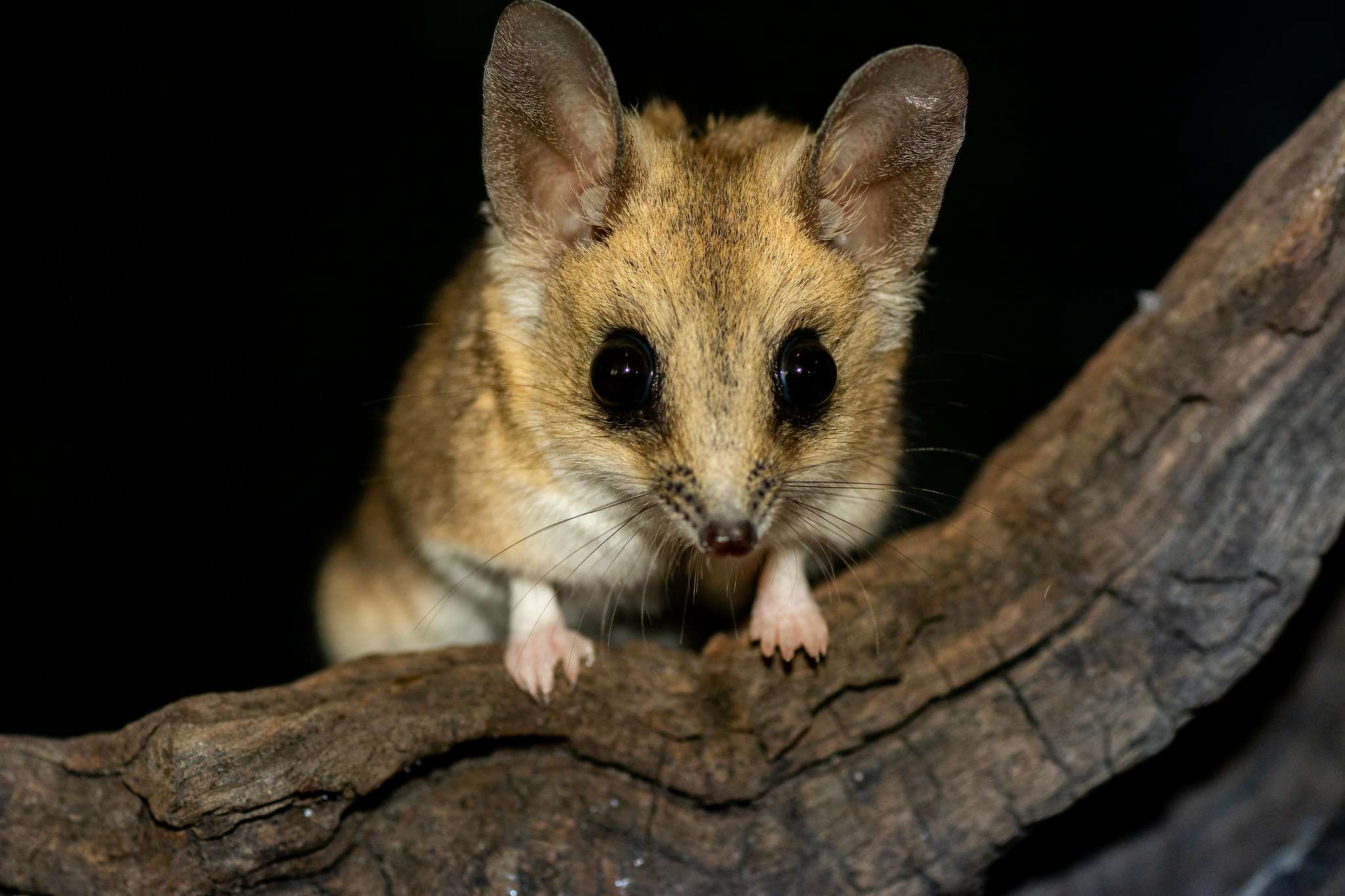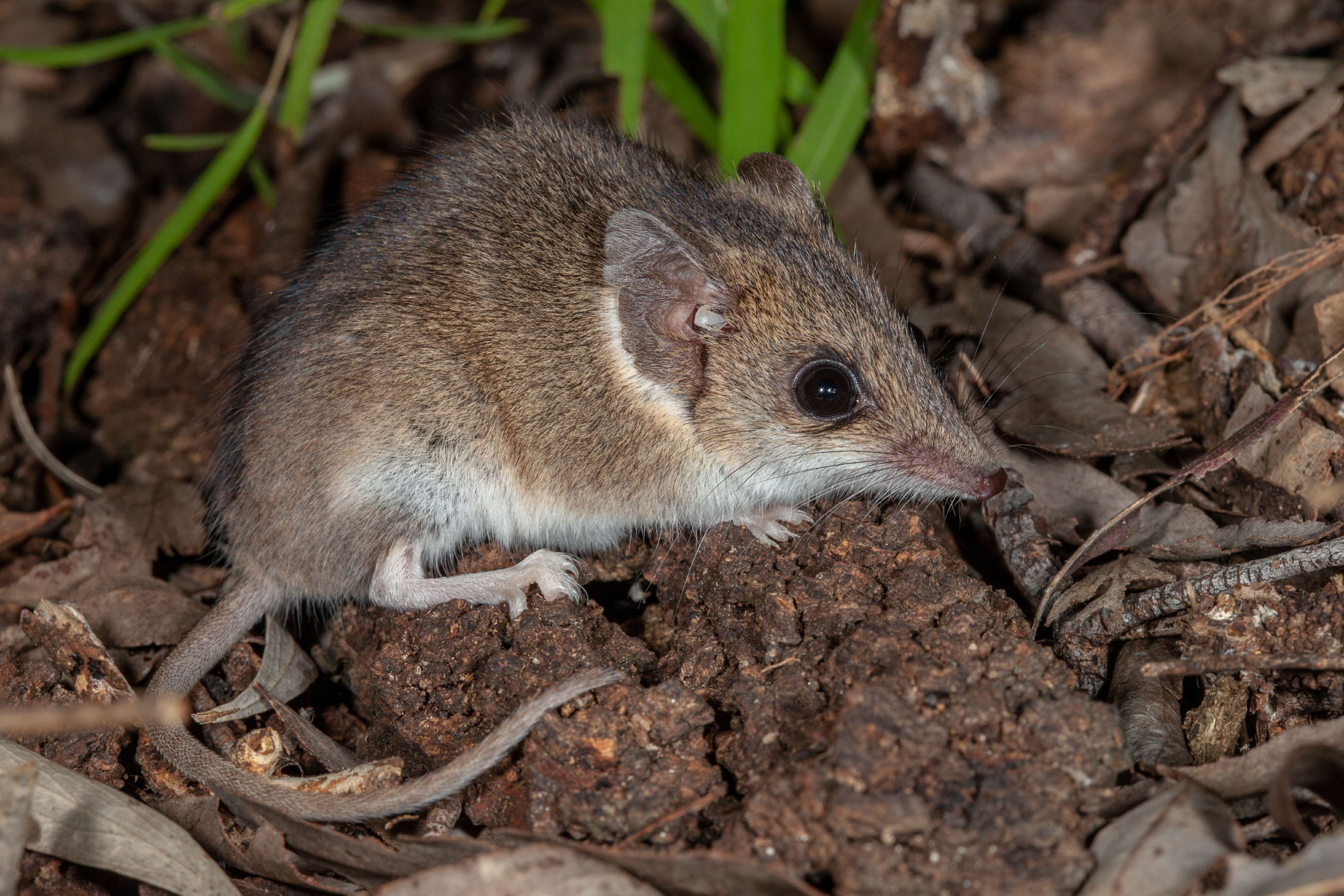The Catchment Critters of the Month for April are the Common Dunnart (Sminthopsis murina) and the Fat-tailed Dunnart (Sminthopsis crassicaudata) as part of the Goulburn Broken Catchment Management Authority’s Grey Box Grassy Woodlands community wildlife awareness campaign.
This project is supported by the Goulburn Broken CMA through funding from the Australian Government’s National Landcare Program.
Goulburn Broken CMA Project Officer, Janice Mentiplay-Smith, said the fierce little Dunnarts, sometimes called native mice, shared their family tree with other members of the carnivorous marsupial Dasyuridae family such as quolls, phascogales and antechinus.

Fat-tailed Dunnart. Photo W Terry
“Dunnarts are generally nocturnal and are found only in Australia. In our local region the Common Dunnart and the Fat-tailed Dunnart call the Grey Box Grassy Woodlands of the Goulburn Broken catchment home,” Ms Mentiplay-Smith said.
“As with many small marsupials, the Common Dunnart and the Fat-tailed Dunnart live life in the fast lane.
“Female Dunnarts have an average life span of 18 months; males live for around 15 months and die after mating.
“They breed in spring-summer with gestation taking around 12-13 days. Up to 10 joeys are born ‘grain-of-rice’ size however not all will survive.”
Baby Dunnarts initially suckle within the pouch and wean at around 70 days. Once they become too big to remain “indoors” they are cared for by their mother in their above-ground nest for another month.
The Dunnart diet consists mainly of spiders, beetles, cockroaches, grasshoppers, and termites. Small mammals, reptiles, and frogs are occasionally on the menu for these busy little marsupials.
Ms Mentiplay-Smith said Dunnarts do not need access to water as their food contains all the moisture they need.
“In times of plenty Dunnarts can store excess fat in their tails to draw upon when cooler temperatures and lack of food necessitates accessing this storehouse of energy. Dunnarts can enter a state of torpor - a form of short-term “hibernation” - whereupon they conserve energy by lowering their body temperature and metabolic rate.
The Dunnart’s diet and nesting requirements mean they depend upon a healthy “messy” ground layer consisting of hollow logs, branches, sticks and understorey plants. Along with predation by foxes and cats, the most significant threat to the Common Dunnart and Fat-tailed Dunnart is the loss of this precious ground cover that provides homes for the food they eat as well as safe havens and nesting habitat.

Common Dunnart. Photo S Mahony
Read more about the Dunnarts and the 28 other mammal species present in the Goulburn Broken catchment’s Grey Box Grassy Woodlands environments in “the Mammal Book’, a 58-page booklet featuring beautiful photographs and informative text.
To view a copy, visit the website The Mammal Book - GB CMA - Goulburn Broken CMA